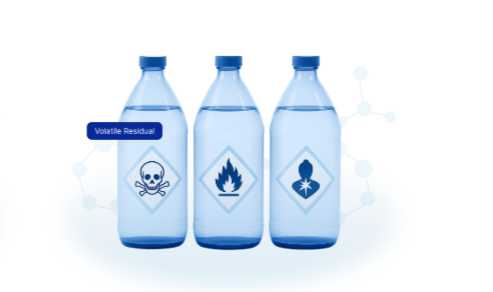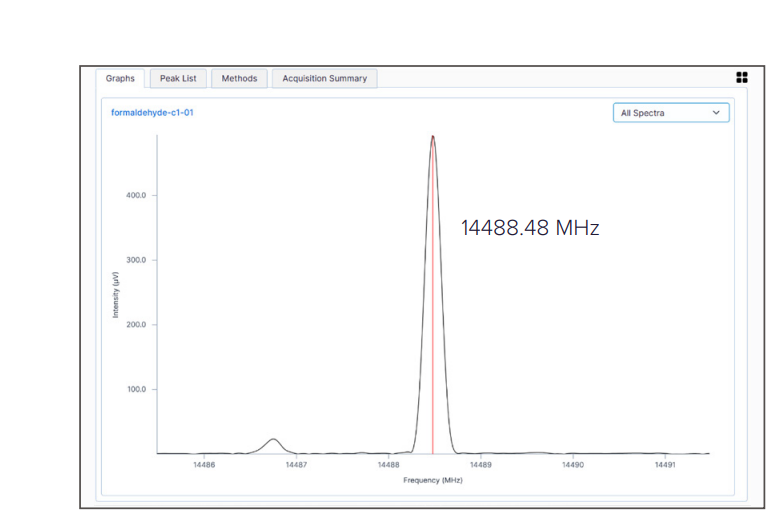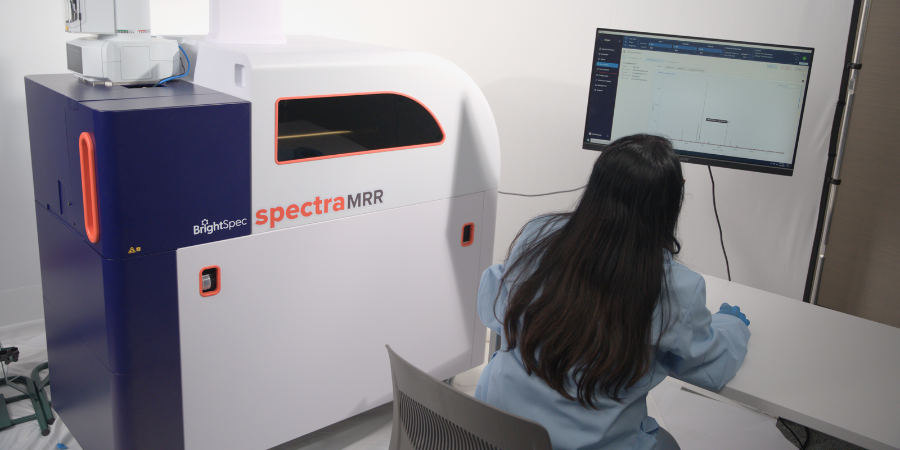Streamline Complex Residual Solvent Analysis
Achieve identity and quantitation data in one simple measurement.
Read the App Note
What You'll Learn
-
No Chromatography Needed
How to identify and quantify volatile residuals without the need for gas chromatography or complex method development.
-
Versatile Sample Compatibility
Why MRR works effectively with challenging solvents, including high-boiling point and water-soluble acids.
-
Key Advantages over Traditional Methods
How BrightSpec's MRR platform compares to conventional techniques in terms of speed, simplicity, and accuracy.
Problem and Solution
Problem
Analyzing volatile residuals often requires extensive method development, especially when dealing with problematic solvents. Traditional chromatography methods can be time-consuming and may struggle with certain solvent classes, leading to prolonged development timelines and potential inaccuracies.
Solution
BrightSpec's MRR technology offers a novel approach by providing identity and quantitation data in a single measurement. This eliminates the need for complex method development, allowing for rapid and accurate analysis of volatile residuals, even those that are challenging for traditional methods
Faster Analysis Workflows
MRR Analysis Speed
Traditional GC methods
The simplified workflow results in a dramatic reduction in time achieved using headspace-MRR compared to traditional GC workflows. MRR can save you 40 to 70 minutes per sample.
Strong, Clear Signal

Figure 4 from the app note demonstrates an MRR Signal response and quantitative performance for formaldehyde in aqueous solution.
Featured Recently

This article demonstrates that MRR with continuous headspace sampling is capable of not only accelerating the analysis of residual solvents via direct analysis but also bridging the analytical gap of SH-GC for analysis of low-volatile residual solvents from USP Residual Solvents Class 2 — Mixture C RS.
USP Stimuli
"Direct Analysis of Class 2 Residual Solvents Using Molecular Rotational Resonance Spectroscopy"
Video Overview
Resources
Article
USP Stimuli: MRR for Class 2 Residual Solvent Analysis
Read how MRR met USP and ICH selectivity, sensitivity, linearity, and range requirements for all solvents studied, including solvents poorly suited for GC analysis.
App Note
Formaldehyde Quantitation
Learn how MRR simplifies formaldehyde quantitation with no derivatization and no separation.
Brochure
Meet the isoMRR
Streamlined analysis, precise quantification, and chiral clarity—all in one powerful platform.
Article
USP Stimuli: MRR for Class 2 Residual Solvent Analysis
Read how MRR met USP and ICH selectivity, sensitivity, linearity, and range requirements for all solvents studied, including solvents poorly suited for GC analysis.
App Note
Formaldehyde Quantitation
Learn how MRR simplifies formaldehyde quantitation with no derivatization and no separation.
Brochure
Meet the isoMRR
Streamlined analysis, precise quantification, and chiral clarity—all in one powerful platform.